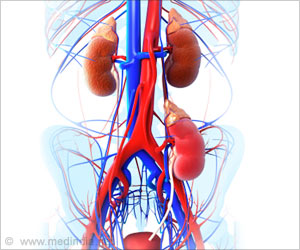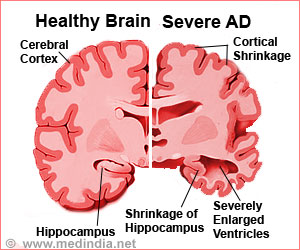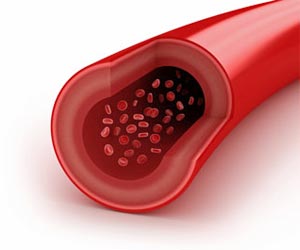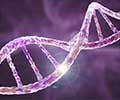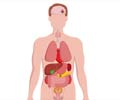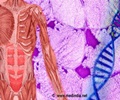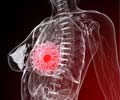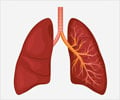A detailed description of how function-impairing mutations in polr1c and polr1d genes cause Treacher Collins syndrome has been reported by scientists.

‘A detailed description of how function-impairing mutations in polr1c and polr1d genes cause Treacher Collins syndrome has been reported by scientists.’





Loss-of-function mutations in three human genes, TCOF1, POLR1C and POLR1D, have been implicated in TCS and are thought to be responsible for about 90% of the diagnoses of this congenital craniofacial condition. The clinical manifestations of TCS include facial anomalies such as small jaws and cleft palate, hearing loss, and respiratory problems. Patients with TCS typically undergo multiple surgeries, but rarely are they fully corrective. By uncovering a mechanism of action common to all three genes, Stowers scientists have advanced scientific understanding of TCS etiology and pathogenesis and identified possible new avenues for preventing or treating the birth defect.
This latest study from the laboratory of Stowers Investigator Paul Trainor focused on Polr1c and Polr1d, whose roles as a genetic cause of TCS were revealed in a 2011 study of a small group of patients who had been diagnosed with TCS but who did not have the TCOF1 mutation. Unlike POLR1C and POLR1D, TCOF1 has been long recognized as a causative gene in TCS and as a result has been more extensively investigated.
"Before we began the study, nothing was known about the role of Polr1c and Polr1d in craniofacial development," said Kristin Watt, lead author of the PLoS Genetics paper and postdoctoral scientist in the Trainor lab. "Using zebrafish as our animal model, we set out to explore the functional roles of polr1c and polr1d during embryogenesis and more specifically in craniofacial development."
Trainor, Watt and their collaborators compared the results of their findings on polr1c and polr1d with their and other labs'' previous research results on Tcof1. In all three loss-of-function models, the researchers found that the chain of cellular events that led to the TCS phenotype of abnormal craniofacial development originated in ribosomes, the cellular components that translate messenger RNA into proteins. Like the Tcof1 gene, polr1c and polr1d mutations were found to perturb ribosome biogenesis, or production of ribosomes, which affects the generation and survival of progenitor neural crest cells, the precursors of craniofacial bone, cartilage and connective tissue.
Advertisement
However, in the polr1c and polr1d models as in the Tcof1 models, Stowers scientists found that by experimentally blocking p53 activation, they could restore the neural crest cell population and thereby rescue the animal models' cranioskeletal cartilage.
Advertisement
A less risky and perhaps more effective target for the prevention or treatment of TCS could be enhancing ribosomes, Trainor said, because the loss-of-function mutations in all three causative genes involve ribosome RNA (rRNA) transcription. Polr1c and Polr1d, for example, are subunits of RNA polymerases I and III that are essential for ribosome biogenesis.
"Rather than blocking p53, a better approach may be to try to prevent TCS by treating the problem in ribosome biogenesis that triggers the activation of p53 and the loss of neural crest cells," said Trainor.
In their research with zebrafish embryos, Trainor and collaborators also determined that polr1c and polr1d are spatiotemporally and dynamically expressed, particularly during craniofacial development. Furthermore, zebrafish embryos with the polr1c and polr1d loss-of-function mutations develop abnormalities in craniofacial cartilage development that mimic the clinical manifestations of TCS in patients.
Trainor said that he and his fellow researchers were surprised that mutations in polr1c and polr1das well as Tcof1 specifically affected craniofacial development, because ribosome biogenesis occurs in every cell of the body. The mutation of a gene that is part of the ribosome complex would be expected to be detrimental to each of these cells, he said. However, in the zebrafish models, the mutation appears to primarily affect progenitor neural crest cells. Trainor said that he and his team theorize that progenitor neural crest cells may be particularly sensitive to deficiencies in ribosome biogenesis during embryogenesis.
Thus, the study revealed new animal models for TCS: zebrafish with polr1c and polr1d loss-of-function mutations. Moreover, the existence of a common mechanism of action may simplify the research, particularly the search for a therapy to prevent or treat TCS. "Because of the similarities among the three causative genes, we may be able to develop creative ways of preventing TCS that will prove effective in at risk individuals who have one of the gene mutations," said Trainor, who has investigated the molecular origins and development of TCS and related craniofacial developmental disorders for 10 years.
Source-Newswise

